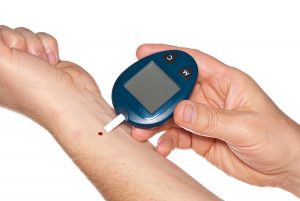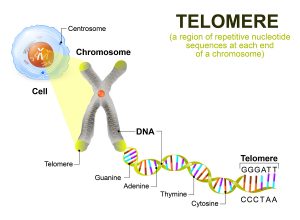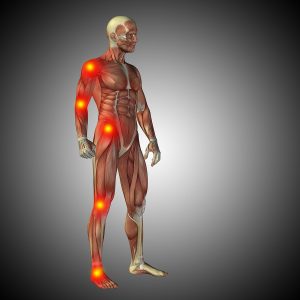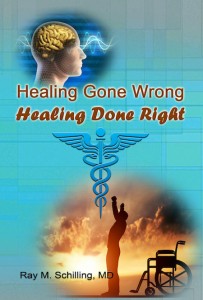There are foods that can protect you from cancer. Generally speaking you want to remove cancer-producing substances from your diet. But diet is only part of your lifestyle that can contribute to cancer. I will list some of the more important dietary factors below and briefly also touch on important other factors.
Avoid burning your meat
When you use the BBQ, avoid burning your meat. As a matter of fact it is a lot better to use a slow cooker at low heat, and cook the meat for a longer time. In this way you won’t create carcinogens, which are cancer-producing chemicals. Healthy Grilling Tips to Minimize Carcinogens in Your Food. This is particularly important for the red meats (like beef, lamb, bison or pork).
Sugar can cause cancer
You never thought that sugar and an overabundance of starchy foods can cause cancer, but they do. What is the reason for this? The answer is found in the metabolism of cancer cells. Cancer cells use 10- to 12-times more sugar for their metabolism than normal cells. Over-consuming sugar is the worst thing a cancer patient can do. Replace sugar by stevia, which is a harmless sweetener. It does not lead to an insulin reaction. You need to avoid all other sugar substitutes as there are other health problems associated with them.
Avoid macaroni and cheese because of phthalates
Avoid macaroni and cheese: Phthalates are found in almost every sample of cheese powder used to manufacture macaroni and cheese. Phthalates can cause infertility and breast cancer. Toxic effects of the easily avoidable phthalates and parabens.
High fat diet
A high fat diet increases the risk for breast cancer: High-Fat Diet Increases Breast Cancer Risk, Study Finds. Limit your fat intake to about 10% of saturated fat. That is the recommendation of the FDA: New FDA Food Guidelines – Medical Articles by Dr. Ray. Increase your consumption of fish and seafood. Only one proviso: predator fish like shark, marlin, tilefish, swordfish and grouper are high in mercury. But wild salmon, sardines and oysters are low in mercury; so are shrimp and squid. Before You Buy Fish, Check This Mercury Level List.
Take high dose vitamin D3 supplements
In order to avoid cancer, take high dose vitamin D3 supplements to avoid cancer. Vitamin D3 in cancer prevention and therapy: the nutritional issue. Strong statistics exist showing that vitamin D3 is a powerful tool to lower your risk of developing cancer. Your family doctor should take a blood test called 25-hydroxy vitamin D level to monitor that you absorb enough vitamin D3. Some people absorb vitamin D3 slowly and fast absorbers absorb it more rapidly. The only way how to find out how well your gut is absorbing vitamin D3, is by doing this blood test. It is now generally accepted that a good range of the 25-hydroxy vitamin D level is between 50 and 80 ng/ml.
Also curcumin 500 mg per day is good for cancer prevention. Turmeric | Cancer in general | Cancer Research UK.
Take enough fiber
Make sure you take enough fiber, which does not only reduce colorectal cancer, but also many other cancers. Foods for Cancer Prevention. North Americans are not consuming enough fiber. Vitamin D3 in cancer prevention and therapy: the nutritional issue.
Avoid processed meat
The World Health Organization has determined that processed meat is causing a lot of cancer. They labeled processed meat as a probable carcinogen. Processed meat causes colorectal cancer, pancreatic cancer and prostate cancer.
Moderate amounts of fruit and vegetables
Eat moderate amounts of fruit and vegetables. The claim in the past that fruit and vegetables would protect you from cancer is not as solid as it was thought of in the past. Newer research has shown that a basic intake of fruit and vegetables is needed for essential nutrients, but consuming more than that will NOT protect you from cancer. Fruit and vegetables and cancer risk. This is a case where eating more vegetables or fruit beyond a certain point will not do harm, but it will not protect you further from cancer.
Drink green tea or black tea
Drink green tea or black tea, sweetened with stevia for cancer prevention: Winter Beverages for Cancer Prevention. Green tea contains polyphenols and antioxidants. One of the antioxidants is called catechin, which prevents cell damage. The antioxidants help to prevent breast cancer, colorectal cancer and prostate cancer. In addition tea is heart healthy.
Avoid alcohol consumption
Avoid alcohol consumption as much as possible to prevent cancer: Drinking Alcohol Really Does Raise Your Cancer Risk, Doctors Warn. We were indoctrinated by cardiologists that one glass of wine per day for women and two glasses of wine per day for men would be a prevention against heart attacks. But these relatively small amounts of alcohol do have an effect on causing cancer. This British study showed that small amounts of alcohol indeed are cardioprotective. In contrast, these amounts and higher alcohol amounts can also cause cancer of the pharynx, larynx (voice box), esophagus, liver, breast, colon and pancreas.
Avoid too much red meat consumption
Beef, lamb and pork probably contribute to causing cancer according to the WHO. Use common sense, and eat more fish, chicken and turkey. Reduce your beef consumption. My grandmother said when I grew up in Germany that beef was a meal reserved for Sunday dinner only. The rest of the days we ate little in the way of meats, but lentils, beans, eggs or fish instead. Ask your grandmother, what she used to cook. Or ask your mother what she ate as a child.
Other lifestyle issues
Quit smoking, if you still do. This is by and large the biggest risk for developing lung cancer, throat cancer, esophageal cancer and pancreatic cancer. Watch your calorie intake: eat smaller meals more often. This way the production of your digestive juices will consume some calories and because you satisfied your hunger for foods, you will not gain weight. This will help prevent obesity and type 2 diabetes, both of which are established risks for developing cancer. Here is a review that shows you, which cancer types are caused by obesity: Obesity and Cancer . With regard to diabetes, there is a strong association with developing liver cancer, pancreas cancer and endometrial cancer (=uterine cancer). There is a lesser risk (only 1.2 to 1.5-fold) to develop colorectal cancer, breast cancer and bladder cancer. Diabetes and Cancer: A consensus report.
Pollution can also be a factor in causing cancer: How air pollution can cause cancer. If you can move to a less polluted city, do so.
Conclusion
As shown above there is strong evidence that certain foods can cause cancer. Others, including supplements like curcumin and vitamin D3, can help prevent cancer. If we avoid as many of the known cancer producing foods and eat more of the healthy foods that do not cause cancer, our cancer risk will decline significantly. In addition, if you quit smoking, avoid pollution as much as possible, reduce your alcohol intake and watch your calorie intake to prevent obesity and type 2 diabetes, you will move into the low-risk cancer group. We all need to work on this on an ongoing basis.















